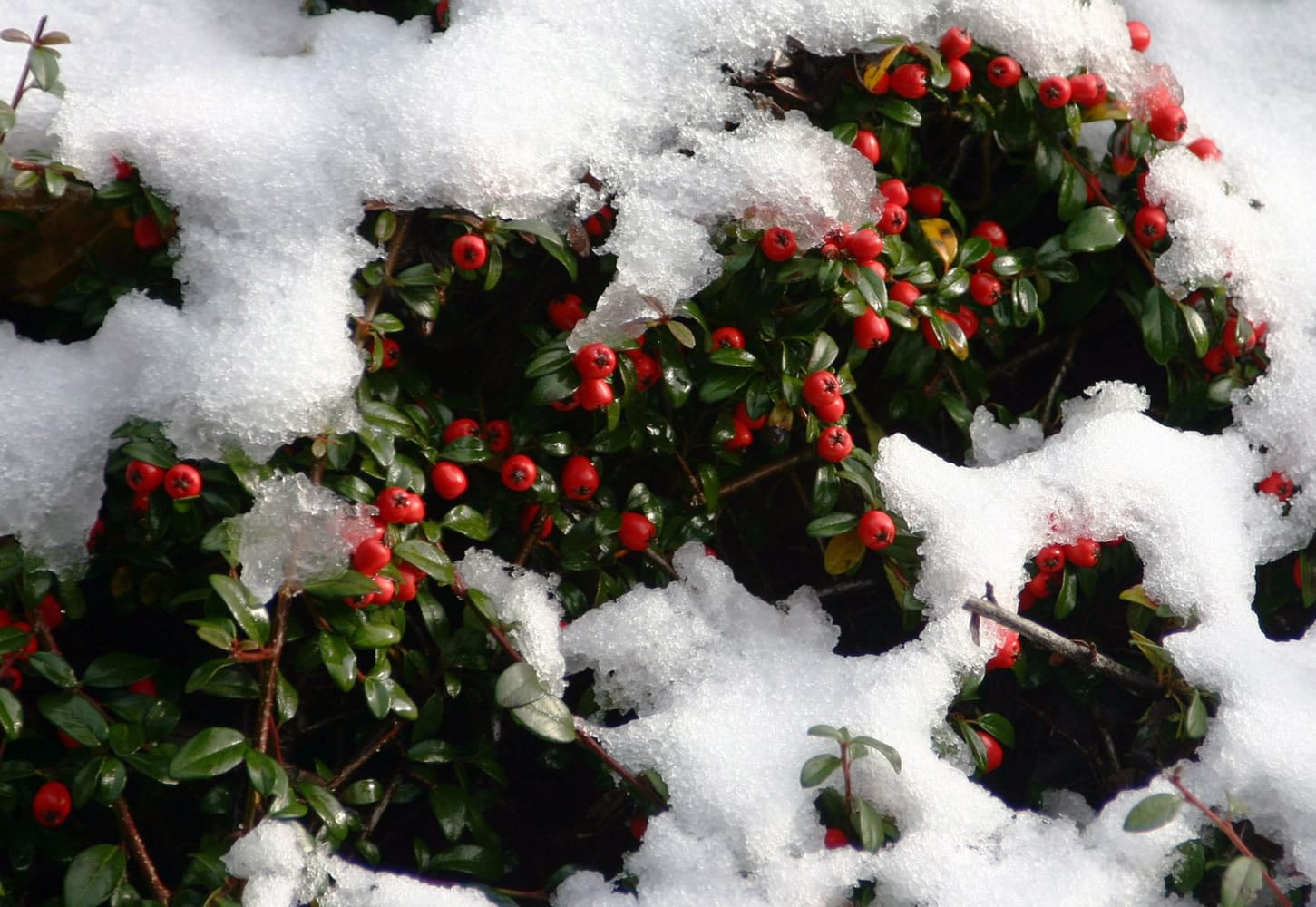Washington was nicknamed the “Evergreen State” by C.T. Conover, pioneer Seattle Realtor and historian, for its abundant evergreen forests. The name was adopted by the Legislature in February 1893. Although the reference is to needled conifers, specifically the Douglas fir, a wide variety of evergreen plants, both broadleaf and needled, grow well in our soil and climate.
Whether you add evergreen plants to the garden now or wait until spring, midwinter is the best time of year to decide where these plants should be added to the garden for their four-season impact. Once established, evergreen trees, shrubs and ground covers become such a solid part of the garden that we tend to forget their year-round value. The vast selection of evergreens available to us grows more abundant each year.
By December, most deciduous trees have shed their leaves, displaying their graceful bare branches, so evergreens are particularly prominent in the landscape through the winter months. A sampling of plants available to us includes Northwest natives such as rhododendron, Douglas fir, sword fern and Oregon grape (Mahonia spp.) These alone can fill any size garden with a solid base of year-round interest.
Every year new colors are added to the once all-green family of needled evergreen plants. Golden yellow varieties are still a hot addition to add life to a winter border. Take any established plant from the Hinoki cypress to a basic arborvitae and you will find a variety with “Aurea” added to the name to denote its yellow coloration. I doubt it’s the end of the color parade either, as more and more blues, reds and myriad shades of green join the evergreen spectrum.
Having planted dozens of newly introduced conifers to my garden over the last 10 years, I can attest to their value in the winter months.
In the eyes of a plant lover, each new variety is unique and worth planting for its individual features. I love the architectural form of spruce and pine and the rich, emerald green of the false cypress family, Chamaecyparis spp., which includes the large group of Hinoki false cypress.
I appreciate the many dwarf varieties now available for the smaller garden and use many of them as accents for beds, borders and planters to give my garden four seasons of interest. I would like to emphasize, once again, that when the word “dwarf” is applied to plants, it does not mean tiny. It doesn’t even mean little. The term dwarf does imply that the plant will be smaller than other plants in the same family.
If, for example, a Western hemlock (Tsuga heterophylla) matures somewhere between 70 and 130 feet tall and 20 to 30 feet wide, a dwarf variety of hemlock is going to be smaller. It might still grow to be 50 feet high. It’s the gardener’s job to find out specifically how large a plant will be at maturity before purchasing and panting.
Winter bonus
Evergreen plants with the bonus of winter berries, flowers and bark color include the flowering camellias (C. sasanqua and japonica spp.) and any of the fascinating heavenly bamboo shrubs (Nandina domestica). On a dreary day in January, the evergreen huckleberry (Vaccinium ovatum) stands out with lustrous, leathery dark green leaves with red and bronze highlights. Its thin green branches, with cascading habit, provide an intricate winter silhouette and it is reliably easy to grow.
There is a point in every winter when I begin to count and recount the weeks and months since the weather turned dreary. We are not there yet, but when the sky feels particularly oppressive in its dank grayness, it’s often better to spend the day indoors. I continue to consider the garden view from every window in the house, adding notes and plans to my journal. There are always garden trends and new plant introductions to read about.
This year in late August, Mr. Son, a Vietnamese gardener with a family-run yard-and-garden maintenance service, helped me trim my ever-growing collection of hedges. Now, the neatly clipped yew hedge that serves as a backdrop to my rose garden and as a divider from the wilderness beyond stands out strong and as solid as an architectural feature. A 50-foot-long ground cover planting of Cotoneaster horizontalis, ripe with red berries, is now trimmed to a gently undulating organic form.
Last week, when a dusting of snow fell on the garden, I could not have been more pleased with the winter picture.
Robb Rosser is a WSU-certified master gardener. Reach him at Write2Robb@aol.com.



